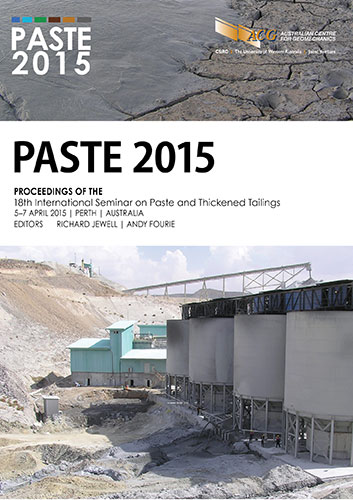Simulation of the meandering flow path of a beaching slurry using a random walk technique

|
Authors: McPhail, GI |
DOI https://doi.org/10.36487/ACG_rep/1504_36_McPhail
Cite As:
McPhail, GI 2015, 'Simulation of the meandering flow path of a beaching slurry using a random walk technique', in R Jewell & AB Fourie (eds), Paste 2015: Proceedings of the 18th International Seminar on Paste and Thickened Tailings, Australian Centre for Geomechanics, Perth, pp. 467-475, https://doi.org/10.36487/ACG_rep/1504_36_McPhail
Abstract:
Splitting a slurry stream through the operation of multiple discharges is an established method of improving the beaching profile both for conventionally thickened as well as high density thickened tailings. To maximise the beach slope, however, it is important to space the discharges sufficiently far apart to ensure that the split flow streams do not recombine down the beach. A random walk technique has been applied by the author to simulate the flow paths of multiple flow streams at a range of discharge spacings, and the results have been used to estimate the optimal number of discharges and spacings to maximise the slope of the deposited beach. This paper describes the theoretical basis for steepening the beach through simultaneous discharge of smaller flow streams, sets out a random walk analysis technique to assess the minimum spacing between the streams to maximise beach slope, and compares the results of the simulations with the full-scale operation at a number of tailings operations.
References:
Harr, ME 1987, Reliability-based Design in Civil Engineering, McGraw-Hill Book Company, New York.
Seybold, H, Andrade Jr, JS & Herrmann, HJ 2007, ‘Modelling river delta formation’, Proceedings of the National Academy of Sciences, vol. 104, no. 43, pp. 16804-16809.
© Copyright 2025, Australian Centre for Geomechanics (ACG), The University of Western Australia. All rights reserved.
View copyright/legal information
Please direct any queries or error reports to repository-acg@uwa.edu.au
View copyright/legal information
Please direct any queries or error reports to repository-acg@uwa.edu.au